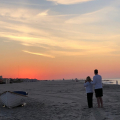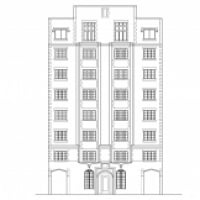Dead Men Tales: The Illuminating Beginnings of Gas Boilers


The Illuminating Beginnings of Gas Boilers
In this episode, Dan Holohan takes us back to 1917 when the gas lighting industry, threatened by Edison’s lightbulb, branched into the business of gas boilers and furnaces.
Comments
-
-
Funny how things change. In the early 70s in New England oil was king at 80%, gas was 15% and electric and wood were next. Electric made a small inroad with the newks in rthe late 60s and early 70s with their aluminum wired houses.
Then gas made it's move in the 80s and continues somewhat to this day. Now, gas has oversold their distribution systems and you can't add gas in some cities and towns.
Don't know what the % numbers are now1 -
Dan... Are you attending AA meetings? As a recovering Authority, you may find them helpful . I think competent Authority Anonymous has meetings at old boiler rooms and Tobacco sellers in just about every town.Edward F Young. Retired HVAC ContractorSpecialized in Residential Oil Burner and Hydronics0
-
-
PSEG was expert in gaslighting of both the literal and figurative sense!To learn more about this professional, click here to visit their ad in Find A Contractor.0
-
Nice0
-
And within a year, we were in the midst of a different pandemic! Enter in the era of oversized boilers so we could open out window to fresh air in the winter. Great story Dan!0
-
I have a house in Newburgh NY built at that time with the latest all-gas technology. The illumination pipe is still inside all the walls and there is a gas jet in the basement but of course it is all disconnected. The heating is one pipe steam and looks original with many of the risers hidden inside the walls. I don't see any sign of coal handling or storage so I've always wondered if the boiler was fired by gas. There was a big gas works nearby. Ironically Newburgh is also the town that hosted the second Edison power plant after the Pearl Street plant in Manhattan.0
-
Thanks, guys. You're making my story even better.Retired and loving it.0
-
This is a fascinating area. I grew up in a building (a fairly typical Chicago 6-flat) built in 1906, which had gas and electric lighting installed from day one. But a coal boiler (switched to gas in the mid-60's - boy did they love not having to manually stoke it early in the morning) for the one pipe heating. The coal room was converted into a big bike room. The gas piping was installed like a tree down the middle of the unit while the electric ran box to box almost haphazardly. There was even a gas fireplace (we never activated it, but assumed that the gas line was still active).
The building I live in now was built in '27 with oil heat and hot water via a massive heat exchanger and storage tank (somewhat unusual for Chicago) and only gas for cooking - with oven flues for baking in summer - and probably venting out the town gas (the building I grew up in also had range flues). No other gas until the boiler was converted in '71 and, I assume, a switch to a conventional water heater. And wood-burning fireplaces.
The best is the former Christian Science church (aka St. Stephens for those of you into Urbex) which had, brass, I think, conduit split down the middle for gas and electric. I have a piece of it with a big black fitting somewhere or other - at least I hope I still have it.0 -
Isn't it true that they did not have the infrastructure to supply enough gas to use for central heating in 1917 if they were to get a large number of their customers to convert since they whole system from the gasworks to the individual services was sized for lighting and cooking? Maybe that was part of why they weren't pushing central heating.
This brings up another question. How did the word "register" become the word that describes a heating or cooling vent opening?0 -
It was manufactured gas not natural gas in those days, so there was definitely supply constraintsmattmia2 said:Isn't it true that they did not have the infrastructure to supply enough gas to use for central heating in 1917 if they were to get a large number of their customers to convert since they whole system from the gasworks to the individual services was sized for lighting and cooking? Maybe that was part of why they weren't pushing central heating.
This brings up another question. How did the word "register" become the word that describes a heating or cooling vent opening?To learn more about this professional, click here to visit their ad in Find A Contractor.1 -
If you read the Gas Engineer's Handbook, you'll see pages of breakdowns on mfd. gas from city to city. The source of the coal being gasified had huge impact on the constituent gases contained. One species did average about 40% of all coal gasification: carbon monoxide. There was a melodrama from around the 1930's where someone asphyxiated a victim by leaving the gas 'on' at the kitchen stove. Natural gas is not toxic and being lighter than air, will rise and dissipate. CO is just slightly lighter than neutral so it rides the air currents in a home. If there is a natural recirculation flow, CO can remain at lower levels rather than quickly rising up through the home. The reason thousands didn't die every night from fugitive mfd gas is the homes leaked like a sieve. Their ventilation rates were well above 5 ACH.
The 1920's were interesting because they saw the advent of the circulator pump for forced hydronic heating, the move away from coal towards liquid and gaseous fuels, the advent of terra cotta flue tiles, the introduction of Portland cement mortars, the mfr and acceptance of refractory cements and mortars, the first chimney codes requiring lined chimneys with a 1" clearance to combustibles and 3/2/10 height above roof rule, and greatly accelerated engineering, research, and codification of mechanical systems, standardization of parts, measurements, metallurgy, and the beginnings of failure analysis along with the electrification of homes and heating systems. The insurance industry started the move towards standardized building codes at the turn of the century through the underwriter's but it took about 20 yrs to really begin to kick in and municipalities to really begin to embrace things like boiler inspections, safety controls, etc. As with so much of mankind, losses drive changes. Just ask Hammurabi with the first building code, in Babylon.
The part II of this journey would be in 1973 when Israel was attacked in the Yom Kippur War, the US supported them and the Arabs retaliated with the OPEC oil embargo triggering fuel shortages and rationing, lines at the gas pumps, and hyperinflation of fuel prices. The result was a seismic shift in construction with the real advent of weatherization attempts, though crude by today's stds. Two things arose right away: condensation on windows and fireplaces smoked. What we didn't realize right away was we had turned our homes into terrariums and therefore unsuitable for atmospheric chimney venting. Yet despite this radical change in the structures, our codes still allow silly things based upon pre-Ozzie and Harriet home construction. Atmospherically vented gas water heaters are still allowed but still are not required to have spill switches interlocked to the gas control. Forced air furnaces are allowed to have filter slots in the CAZ without an interlock switch even if it is a confined space. 80% furnaces are allowed to be common vented with draft hood equipped appliances, thereby defeating 3 primary safety controls. Aluminum chimney liners are still legal for CAT I venting. Ductwork is still allowed to exit then re-enter the conditioned space. Heating systems are allowed to be replaced without weatherizing the home first or sizing/ sealing duct system then actually calculating and designing the proper system rather than replacement with similar oversized equipment in leaky homes with undersized leaky ducts. Techs still sell 90%+ communicating systems then enter an attic through an un-weatherized 1/4" plywood hatch. I could ramble on more but you get my drift. How far we've come but how far we could go in short order.0 -
There was a 1962 "Perry Mason" episode where they did that with a wall heater. It was an older model that obviously did not have a pilot safety (BASO) control. By then, most places would have switched to natural gas, as Baltimore did in the mid-1950s, but the perception of deadly gas was still pretty strong:Bob Harper said:There was a melodrama from around the 1930's where someone asphyxiated a victim by leaving the gas 'on' at the kitchen stove.
https://www.perrymasontvseries.com/wiki/index.php/EpisodePages/Show154
Side note- Adam West, who later played "Batman", appeared in this episode.All Steamed Up, Inc.
Towson, MD, USA
Steam, Vapor & Hot-Water Heating Specialists
Oil & Gas Burner Service
Consulting0
Categories
- All Categories
- 85.2K THE MAIN WALL
- 3.1K A-C, Heat Pumps & Refrigeration
- 55 Biomass
- 424 Carbon Monoxide Awareness
- 73 Chimneys & Flues
- 1.9K Domestic Hot Water
- 5.2K Gas Heating
- 129 Geothermal
- 160 Indoor-Air Quality
- 3.3K Oil Heating
- 61 Pipe Deterioration
- 884 Plumbing
- 5.9K Radiant Heating
- 376 Solar
- 14.7K Strictly Steam
- 3.2K Thermostats and Controls
- 59 Water Quality
- 49 Industry Classes
- 89 Job Opportunities
- 28 Recall Announcements






